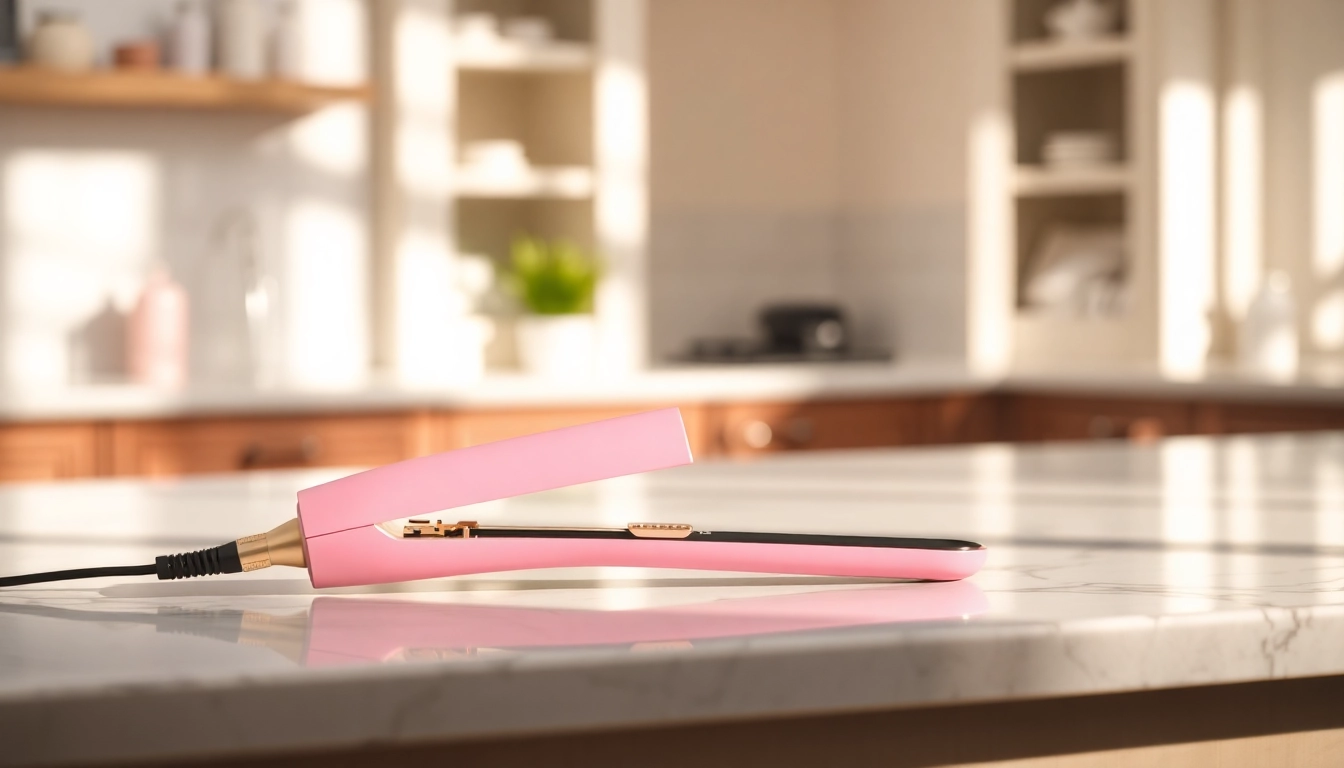Understanding Professional Hair Styling Tools
In the world of styling and grooming, the right tools play an essential role in achieving salon-quality results at home. Professional hair styling tools are designed with advanced features and technology to assist both hairstylists and everyday users in creating various looks effortlessly. For anyone serious about hair care and styling, investing in professional hair styling tools is crucial to getting the desired results. This article will delve deep into the essentials of professional hair stylers, exploring their features, types, and how to select the right ones for your needs.
What Makes Hair Styling Tools Professional?
Professional hair styling tools differ significantly from their consumer counterparts in several key aspects:
- Quality of Materials: Professional tools are made from higher-quality materials that enhance durability and performance. Materials like titanium, ceramic, and tourmaline ensure even heat distribution and stability.
- Advanced Technology: Many professional tools incorporate the latest technologies, such as ionic and infrared heat, which work to minimize heat damage. This technology helps in preserving hair health while styling.
- Design and Ergonomics: Designed for extended use, professional tools often feature ergonomic designs that reduce hand fatigue and allow for precise control, making them easier and more comfortable to use over long periods.
- Result Focused: These tools are developed to provide superior styling results that meet the demands of salon professionals, which means they perform better than standard tools used at home.
Key Features to Look For
When investing in professional hair styling tools, consider the following features:
- Temperature Control: Tools with adjustable heat settings allow users to customize the temperature according to their hair type, preventing damage to fine or delicate hair.
- Rapid Heat-Up Times: Professional tools often heat up quickly, saving time and allowing for spontaneous styling without long waits.
- Cord Length and Flexibility: A long, flexible cord helps in maneuverability, making it easier to work with the tool around your styling area.
- Warranty and Customer Support: A robust warranty can indicate product quality and assure customers of long-term support.
Common Types of Professional Hair Styling Tools
Understanding the common types of professional hair styling tools can guide your choices:
- Hair Dryers: These tools are vital for drying and styling hair quickly. Features like tourmaline technology can help in reducing frizz while enhancing shine.
- Flat Irons: Ideal for straightening hair, ensuring even heat distribution, and creating sleek looks without damaging the hair.
- Curling Irons and Wands: Perfect for creating curls and waves easily. Professional versions often allow for varying barrel sizes to achieve different styles.
- Hot Brushes: Combining brushing and heating technologies to dry and style hair simultaneously, making the process quicker and more efficient.
- Clipper and Trimmer Sets: Essential for precise cuts and beard trimmings in professional environments.
Choosing the Right Hair Styling Tools for Your Needs
Identifying Your Hair Type
Understanding your hair type is crucial when selecting the right styling tools. Consider factors such as:
- Texture: Is your hair fine, medium, or coarse? Fine hair may require tools with lower heat settings to prevent damage, while coarse hair might benefit from tools that can reach higher temperatures.
- Length: Longer hair may need tools that can cover more area efficiently, while shorter styles might benefit from precision tools like flat irons or smaller curling irons.
- Damage Level: If your hair is damaged or chemically treated, tools that condition while styling can be beneficial, such as those with ceramic or ionic technology.
Choosing Between Heat-Based and Non-Heat Tools
When selecting hair styling tools, consider whether heat or non-heat options are more appropriate:
- Heat-Based Tools: Commonly used for quick styling, but may lead to heat damage over time if not used properly. Always use a heat-protectant product with these tools.
- Non-Heat Tools: These options often include styling gels, hair rollers, or wraps, which can minimize damage while achieving beautiful styles.
Budgeting for High-Quality Tools
While it may be tempting to cut costs, investing in high-quality styling tools can lead to better results:
- Long-term Investment: Professional tools tend to last longer and perform better than cheaper alternatives, making them more cost-effective over time.
- Price Vs. Performance: Consider the performance qualities of a tool relative to its price. Sometimes, spending slightly more can dramatically improve your styling results.
Top Brands in Professional Hair Styling Tools
Comparing Features of Popular Brands
Several brands dominate the professional hair styling tools market, each offering unique features:
- Dyson: Known for its innovative technology, Dyson’s hair tools provide exceptional performance with features that minimize heat damage.
- Bio Ionic: Prioritizes hair health with its Moisturizing Heat technology that conditions hair during styling.
- Paul Mitchell: Offers a range of professional tools that cater to diverse styling needs while emphasizing quality and efficiency.
- Hot Tools: Popular in salons, Hot Tools provides reliable products designed by stylists, focusing on practicality and results.
- T3: Combines technology and elegance in its design, offering tools with high-performance abilities.
Customer Reviews and Ratings
Before purchasing, it’s beneficial to check customer reviews and ratings:
- Real Experiences: Customer feedback can provide insights into the reliability and effectiveness of the tools you’re considering.
- Common Issues: Look for recurring themes in reviews, as these can highlight potential issues or advantages that may not be obvious from product descriptions.
Innovations in Hair Styling Technology
The hair styling industry is continuously evolving. Current innovations to look for include:
- Ionic Technology: Reduces frizz by emitting negative ions, helping to lock moisture in and maximize shine.
- Thermal Sensors: Tools that adjust heat levels automatically based on the hair’s temperature, minimizing the risk of damage.
- Self-cleaning Features: Some modern tools come with self-cleaning capabilities, simplifying maintenance and extending tool life.
Linking Tools with Techniques: How to Achieve Salon-Quality Results
Techniques for Using Heat Tools Effectively
To get the most out of your professional tools, proper technique is essential:
- Sectioning Hair: Divide hair into manageable sections to ensure even styling and prevent tangles.
- Heat Protectants: Always apply a heat protectant before using heat tools to shield your hair from damage.
- Speed and Duration: Use the right speed and duration for each section, avoiding the temptation to go over the same area multiple times.
Styling Tips from Professional Hairstylists
Gleaning insights from professionals can enhance your hair styling game:
- Mixing Tools: Combining different tools can yield unique styles. For example, using a flat iron to create curls can give a modern touch.
- Finishing Products: Utilize finishing products like hairspray or shine serum after styling to set and protect your hairstyle.
- Experiment: Don’t shy away from experimenting with various techniques and tools to discover what works best for your hair.
Combining Tools for Diverse Styles
Mastering the art of combining tools broadens your styling possibilities:
- Curling and Straightening: Start with straightening the hair and then add curls for a dynamic finish.
- Volume Boosting: Use a blow dryer with a diffuser attachment after curling for a voluminous look.
- Layering Techniques: Different tools can be layered to create depth and movement in your hairstyles.
Maintenance and Care for Professional Hair Styling Tools
Best Practices for Tool Maintenance
Proper maintenance prolongs the life and efficiency of your styling tools:
- Regular Cleaning: Ensure tools are cleaned regularly to prevent buildup of hair products and dirt.
- Heat Protection: Store tools away from excessive heat and moisture to prevent damage.
Ensuring Longevity of Your Tools
With proper care, you can keep your tools performing well over time:
- Storage: Use proper cases or hangers which can help avoid unnecessary wear and tear.
- Regular Checks: Inspect tools regularly for damage, such as frayed cords or loose parts, to prevent accidents.
Common Mistakes to Avoid
Avoiding common pitfalls can help ensure the best usage of your tools:
- Ignoring Heat Settings: Using the same temperature for all hair types can result in damage. Always customize the heat settings.
- Skipping Heat Protectant: Fail to use heat protectants can lead to significant damage over time.
- Using Tools on Wet Hair: Always ensure hair is completely dry before using heat styling tools to prevent damage.




